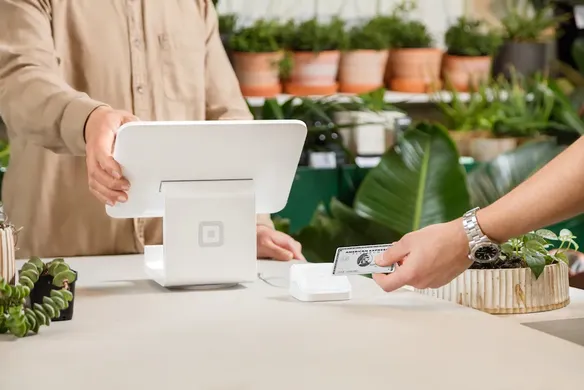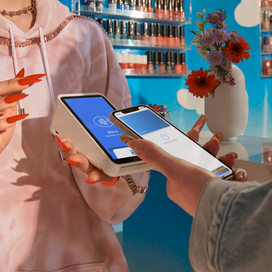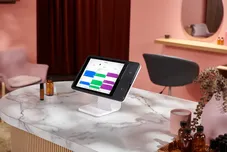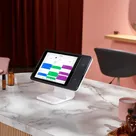Table of contents
The POS or “point-of-sale” (also known as an EPOS) is the heart of small businesses across Australia. But do you know the difference between a POS and a cash register? The two are similar, yet at the same time very different in the way they enable you to take payments and run your business. Many of these differences could significantly impact your growth potential, which is why we’ve created this comprehensive guide.
What is a cash register?
A cash register is the machine used by businesses to calculate and record financial transactions. Most have a keypad that’s used to input values, as well as the functionality to attach a barcode scanner, cash drawer, receipt printer and scales.
The cash register dates back to 1879 when it was invented by James Ritty, a saloon owner from Ohio, USA. His creation was patented “The Incorruptible Cashier”. Ritty had recognised the need for a device that could record the quantity and value of a business’s sales to deter any pilfering employees. In a historical context, it also represented a shift towards a new, more analytical approach to business, focused on profit and growth.
Many cash registers today are digital, featuring a touchscreen rather than a manual keypad and mechanical inner.
What is a pos?
A POS system centralises your business transactions and operations using a mix of hardware and software. It’s like a cash register, but rather than exclusively monitoring sales, it plugs them into the rest of your business. POS systems help companies operate more efficiently because of this ability to track, analyse and interpret more metrics. They also provide you with deeper insights that lead to more involved, informed decisions.
What is Square register?
Square Register is the first fully integrated point-of-sale system that lets you start selling right out of the box. This touch screen POS system is built to be faster, more powerful, and more reliable. Accept contactless payments, manage online sales, sell gift cards and utilise click & collect / delivery all from one integrated POS Register. With Square Register you get dedicated hardware (including a seller display, customer display, hardware hub, and mounting kit), embedded point-of-sale software, and Square’s secure payments technology. These are all built by Square, so you can sell with confidence, knowing everything will just work together.
What is the difference between a cash register and a POS?
The fundamental difference between a cash register and a POS is that cash registers are built to manage sales and sales alone; POS systems on the other hand act as the nerve centre of your small business, integrating those sales in a way that helps you understand things like:
- What your most popular products are
- Who your most loyal customers are
- What products are selling out and need to be restocked
- Which of your employees achieve more sales
- What your customers think of your business
- Which areas of your business are and aren’t working in general
While a cash register can only tell you how much money you’re making, a POS system has the ability to show you how to make more, by cutting back on products that don’t sell well, stocking more products that do, rewarding your most loyal customers, training staff who need the support and so on.
Another key difference is affordability. While some POS systems charge a monthly fee, others like Square are free to download and run, with no long-term contracts or commitments. All you need is a compatible device and optional payment hardware, like a card reader.
What features does a cash register have?
A cash register enables businesses to securely accept and track sales. This means that they only require a few working components to be used:
Keypad or touchscreen
For businesses that don’t have barcodes on their products, such as bars or salons, a keypad or touchscreen is necessary to key in the sum of the sale being made.
Receipt printer
In some cases, cash registers have their own inbuilt receipt printers, allowing sellers to provide a sales slip that proves a transaction took place. For those that don’t, there’s usually always the ability to plug into an external device.
Cash drawer
Cash drawers come as standard for most cash registers. They secure the collection, transaction and storage of cash by only opening when the correct series of actions are taken on the cash register keypad, or manually with a physical key.
What features does a POS have?
POS systems blow cash registers out of the water when it comes to features — this is one of the main reasons behind the growth in their popularity. Here are some of the most common features that set a point-of-sale system apart:
Compatibility and customisation
With businesses becoming less static, many POS systems are designed so you can run yours from any device, anywhere — whether that’s your laptop, iPad or even your smartphone. They also come with the ability to take cash and card payments, meaning there’s no need to have separate contracts with different providers.
POS systems are designed to be customisable, with different levels of access, different features and tools and the ability to integrate other software.
Analytics & reporting
With POS analytics, you can view key metrics across your entire business, even with multiple locations. Freedom to change parameters means you can gather the most relevant insights at any given time. The areas of your business you can look into include:
- Sales summaries
- Sales trends
- Payment methods being used
- Employee performance
- Discounts
- Modifier Sales
- Taxes
Find out more about analytics.
Inventory management
Understanding what’s selling well, what isn’t and what needs to be restocked are daily demands for brick and mortar businesses, but doing so manually leaves room for error. POS systems do the majority of the legwork for you by:
- Updating your inventory system every time you make a sale
- Alerting you when stock needs to be refreshed
- Showing you how well products are selling
The best inventory management systems also make it easier to update product information, like names, prices and images. They also provide “modifiers”, allowing you to create add-ons for your products, like dairy-free options, extra toppings and special requests.
Find out more about inventory management.
Employee management
Without data to show you which of your staff are selling what, when and how much, recognising under- and over-performance within your team is left to guesswork. Employee management tools help you grow and nurture your team strategically by giving you specific insights.
They also enable you to set up various permissions, create time cards and have staff take payments from their own devices.
Find out more about team management.
Customer management
Cash registers can’t be used to link transactions back to individual customers or to see who’s providing repeat business. Customer management software within a POS system allows you to create, access and edit customer contact lists. You can even message customers directly and collect notes on their buying preferences.
Find out more about customer management.
Customer feedback
Customer feedback takes customer management one step further, opening a direct channel of communication for them to tell you about their experience — in private, away from the prying eyes of social media and review sites. You can then respond with refunds, vouchers and other freebies.
Find out more about customer feedback.
App integrations
While a cash register is a standalone product, an integrated POS allows you to plug in other apps. You may want to do this for a number of reasons:
- To consolidate online and offline sales if you have an eCommerce store.
- To link accounting software so that all your business finances can be reconciled in one place.
- To connect marketing software so you can sync customer lists and communications.
Find out more about app integrations.
With technology at the heart of the best POS systems, new features and tools get developed all the time, equipping your business with everything it needs on an ongoing basis.
Should I get a cash register or a POS?
If you’re not sure whether a stripped-back cash register or feature-rich POS is right for you, here are some questions to help you decide.
Do you need multiple cash registers?
Businesses with multiple locations, large stores with several serving points or sellers that trade at fairs and markets are likely to need more than one cash register. Not only would this be a costly investment, but without the ability to sync sales activity across each till, you’d have to do the reconciliation manually.
One POS system can run across many devices — all you need is your smartphone, iPad or laptop — is more affordable, and ensures that every single sale gets tracked, wherever it’s made.
How much inventory do you have?
A poorly managed inventory doesn’t just lose businesses money internally; it can also impact you long-term, whereby regularly being out of stock on items, or making errors with customers’ orders, forces them elsewhere.
Cash registers do not give you the ability to manage inventory — a valuable feature to be missing out on if your business has a high inventory count or works with many product variants.
How many staff will be using the system?
For your employees to excel at work, they need the right tools and the knowledge and space to use them. A cash register may suit a small business where only one person is needed to process single transactions. But for those with multiple staff, who need to process payments simultaneously, a point-of-sale system that integrates across multiple devices (even their own smartphones) is best.
What are your growth plans?
Small business owners aren’t blessed with ample time to think about the future, but it’s worth your while to write a business plan and consider your business goals. Growth is the top goal shared by Square sellers, with greater revenue and more customers taking precedence. If this turns out to be you, consider how a point-of-sale system comes with software that can be updated for free, and hardware that is affordable to upgrade if necessary.
Despite similar appearances, when you drill into pricing, features and functionality, there are big differences between a cash register and a POS. POS systems increasingly beat cash registers in all of these areas, and with the technology to constantly adapt and improve, they’re well-suited for the needs of agile, reactive small businesses.
![]()











